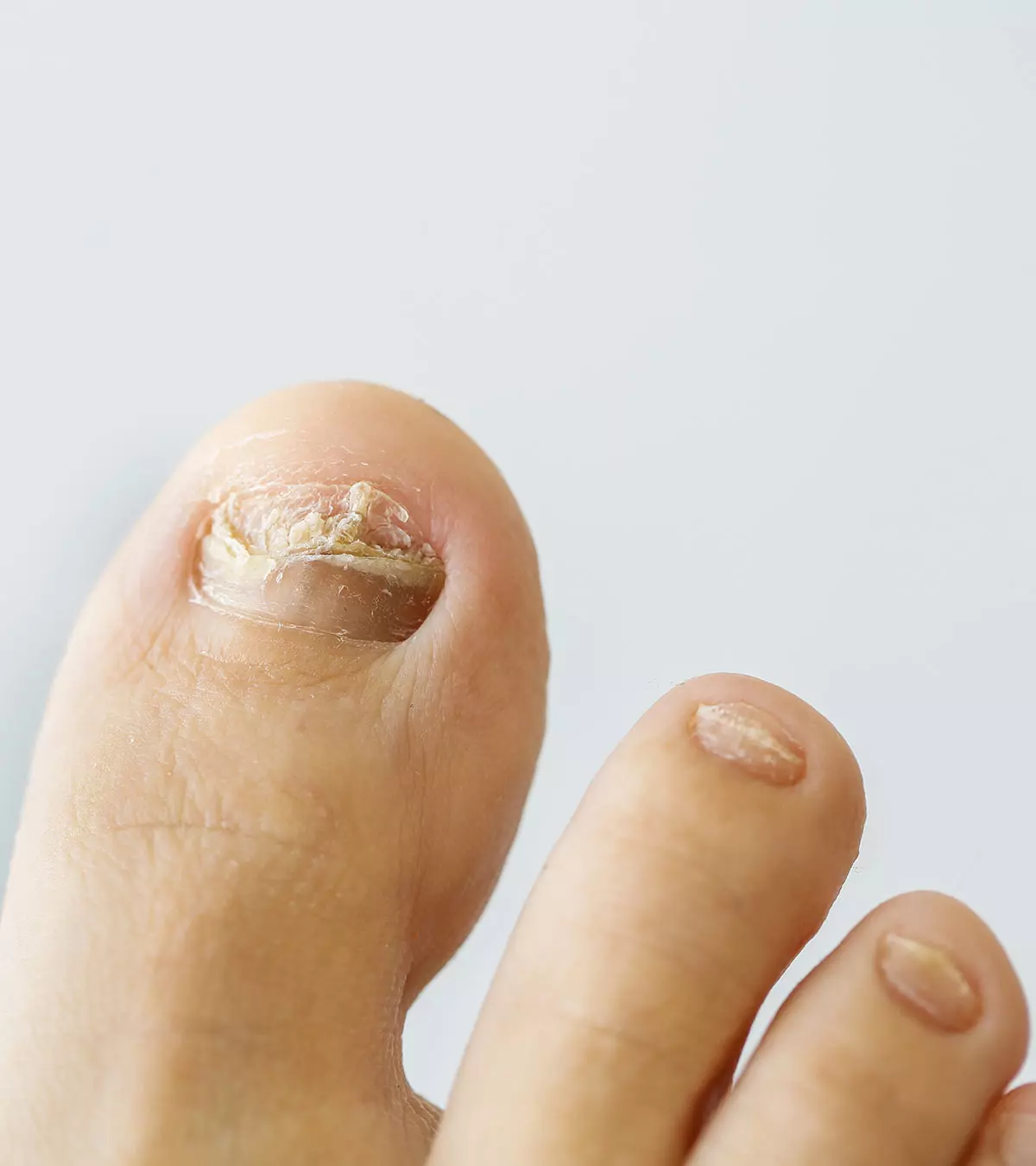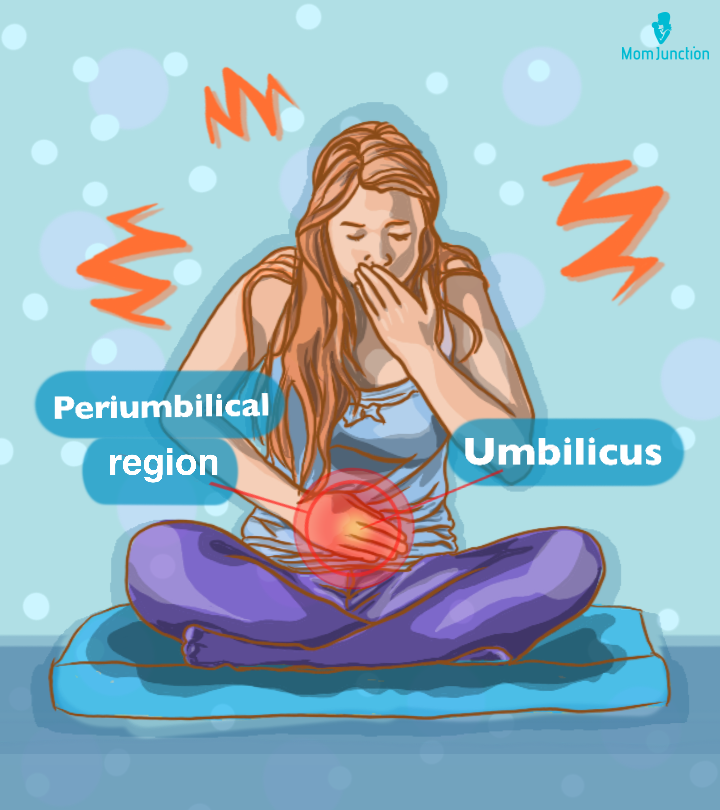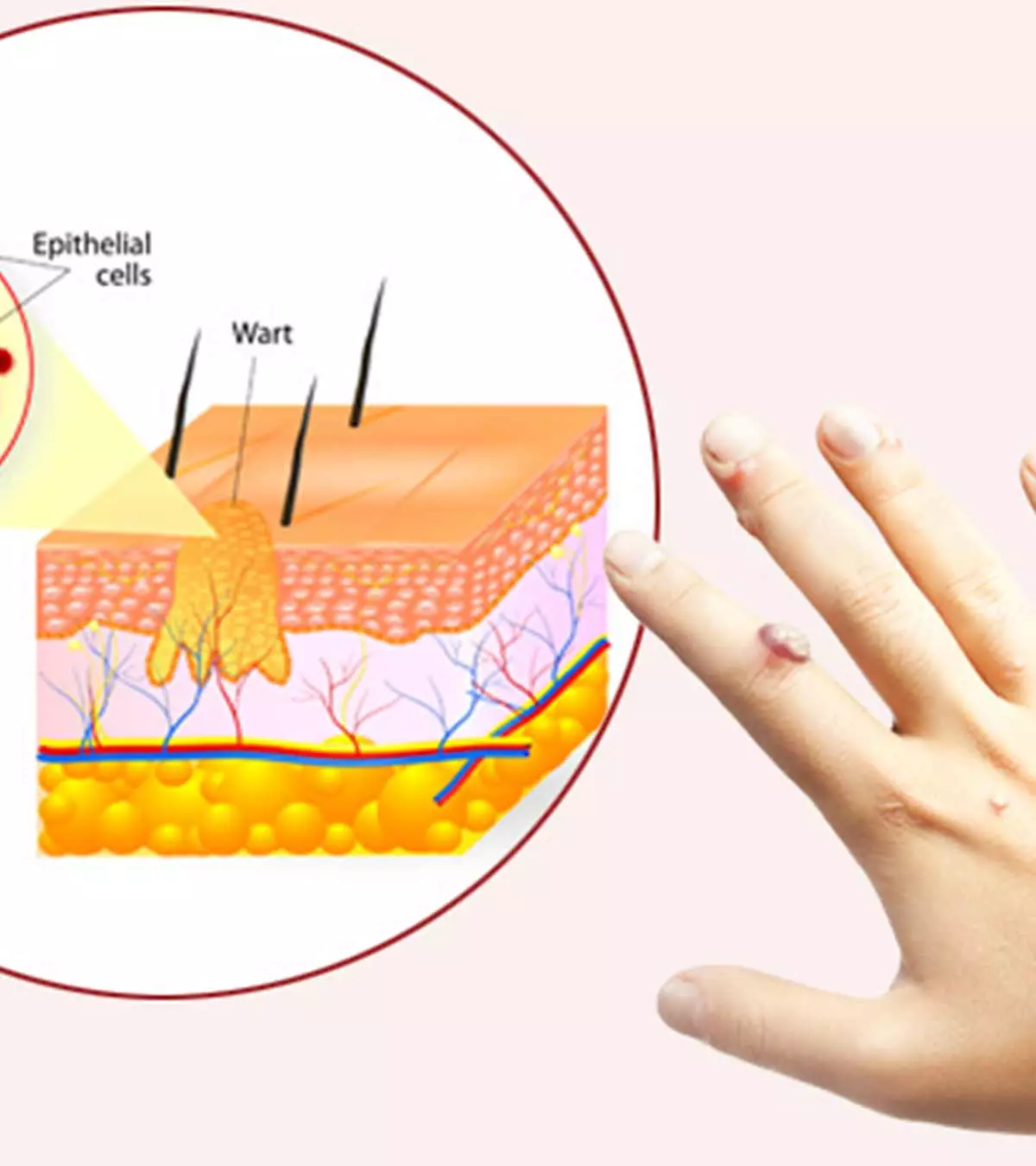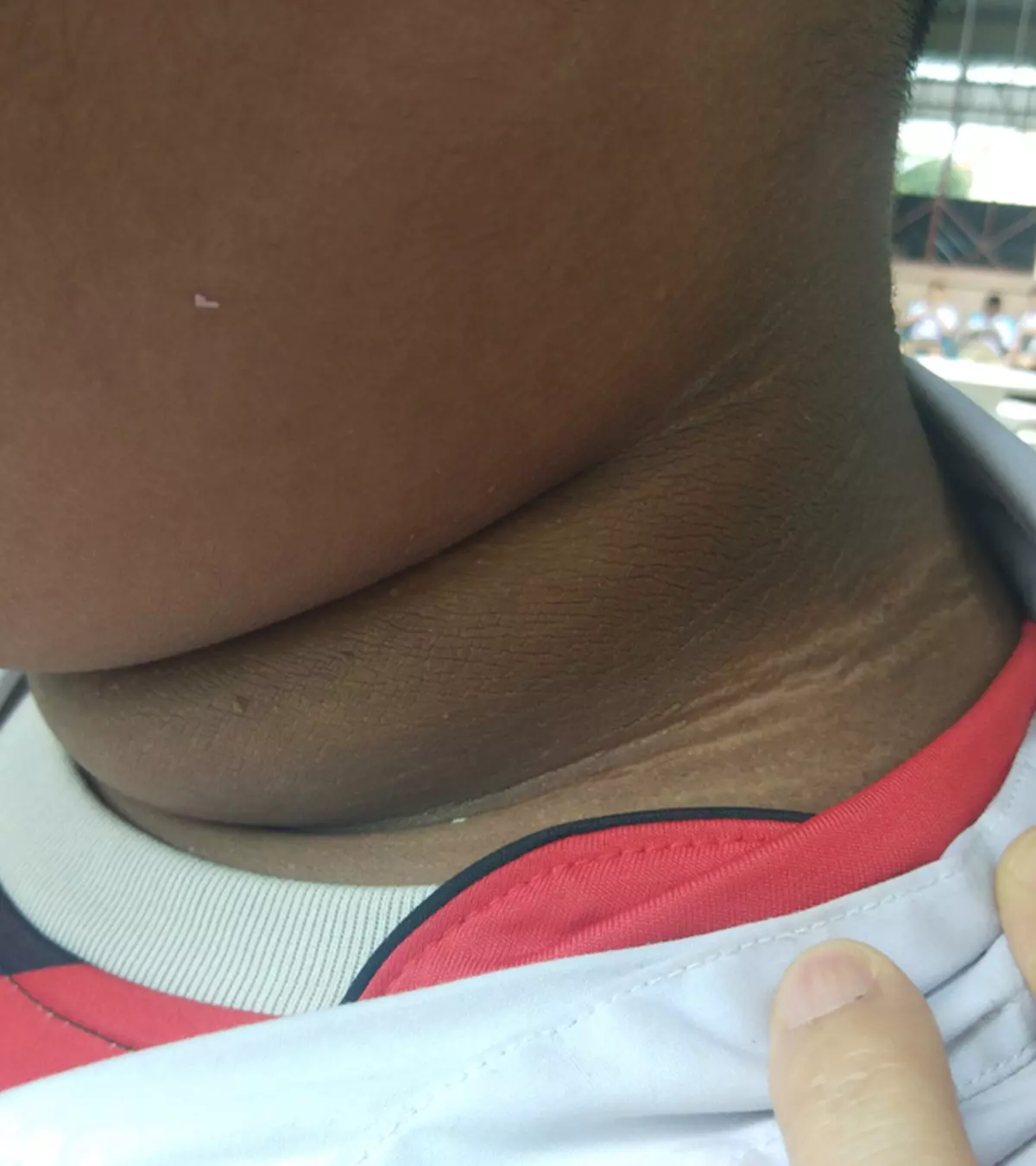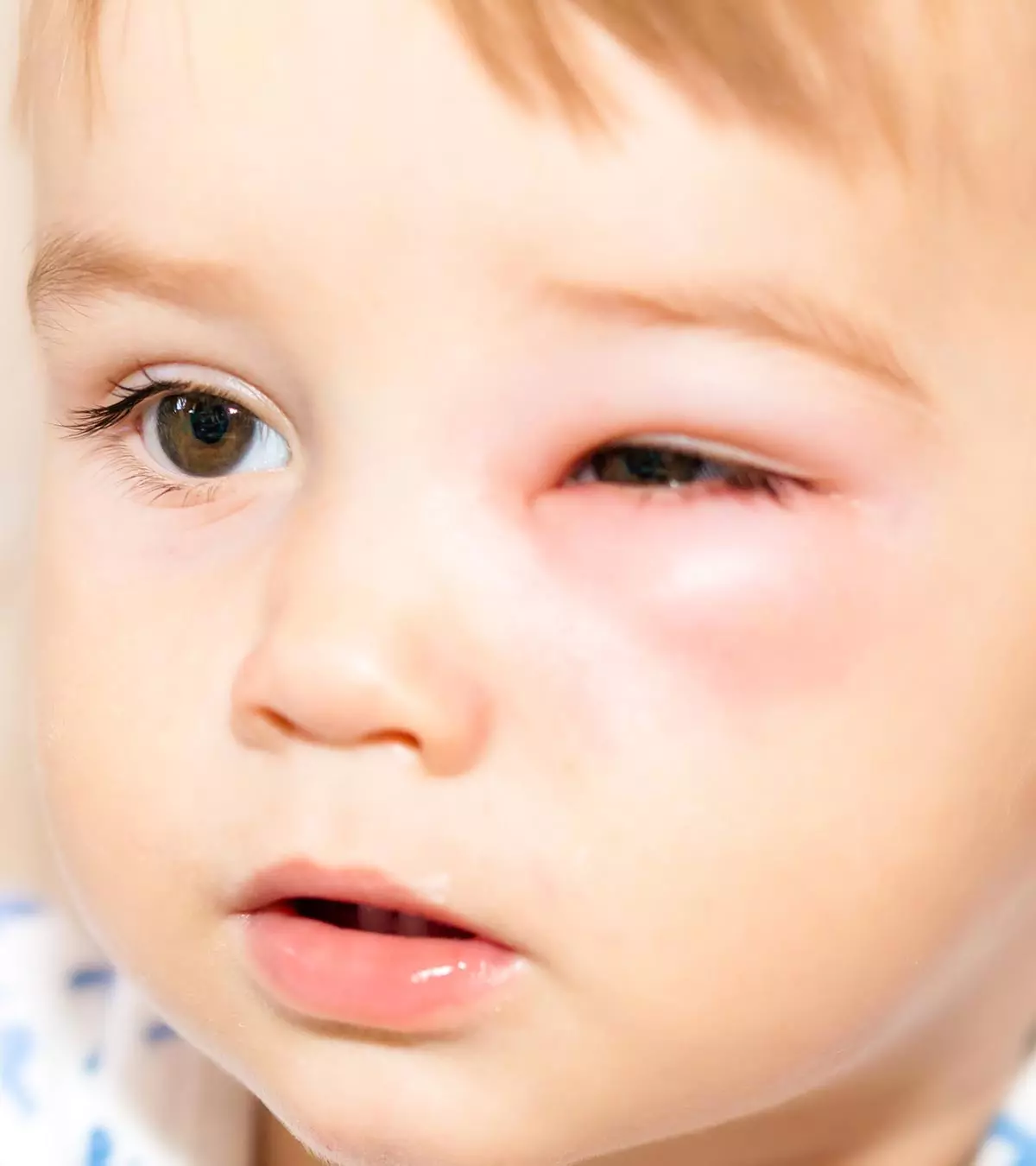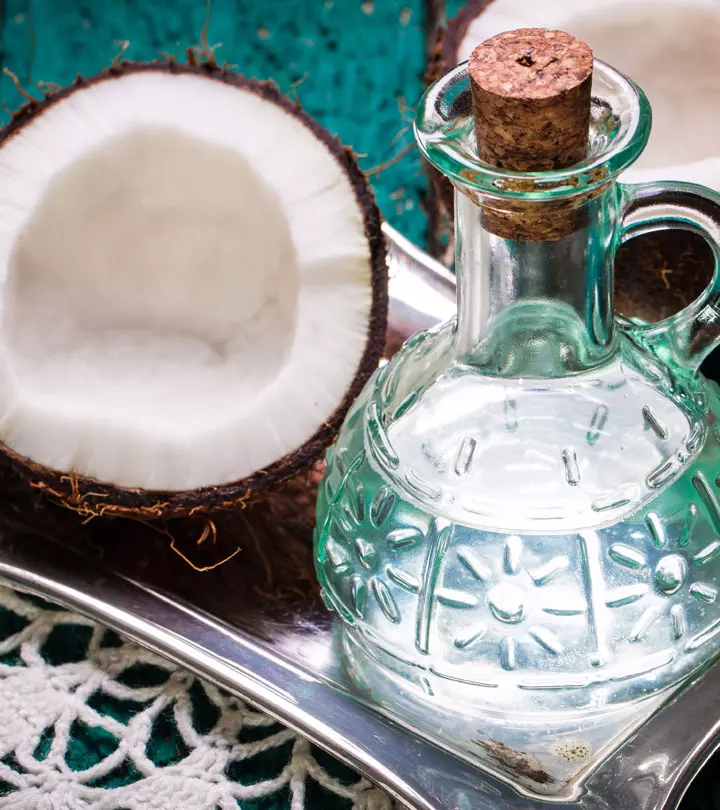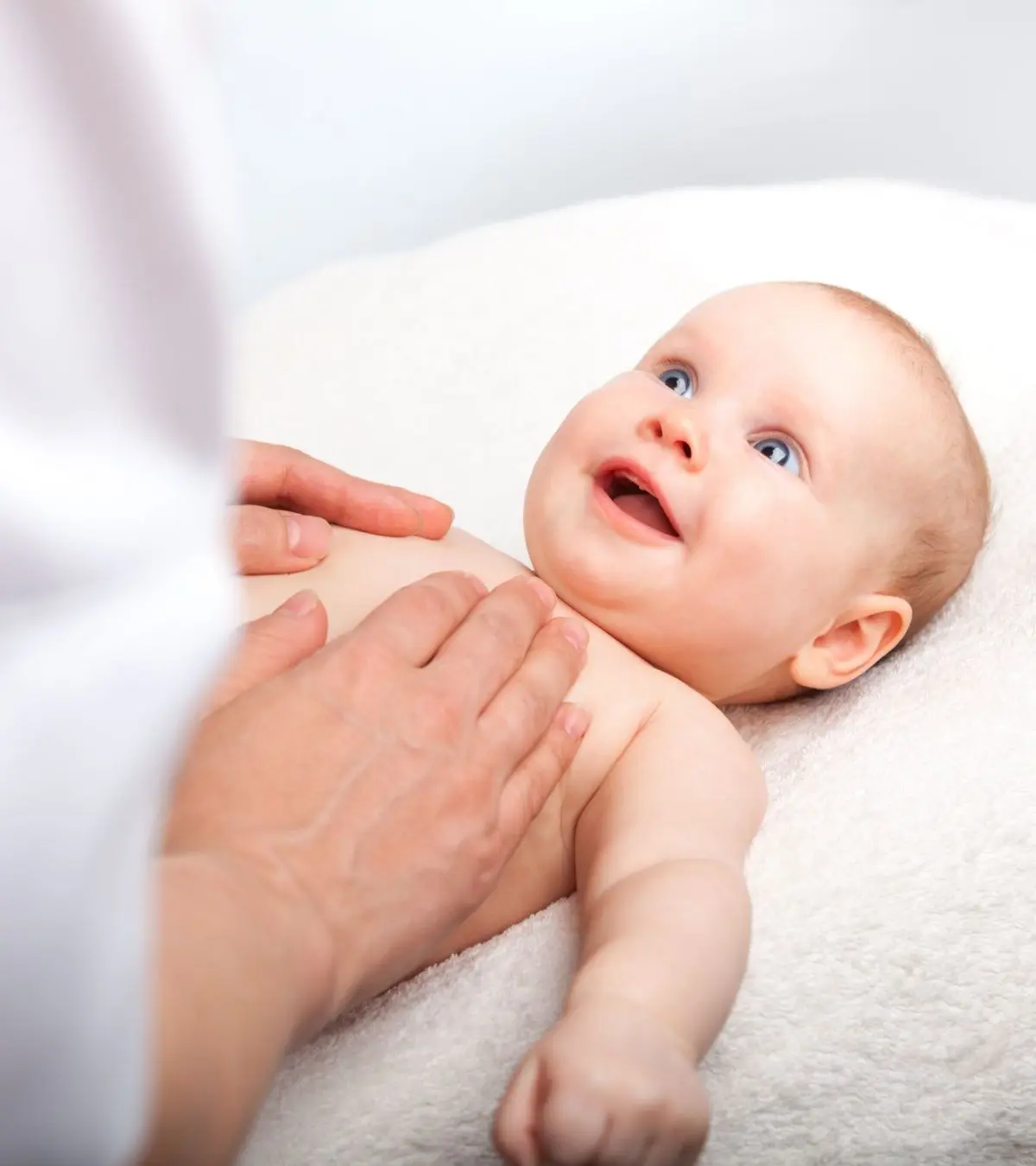
Image: Shutterstock
Babies start experiencing gas a few days or weeks after birth. It usually resolves by itself at six to seven months but may last for longer. A common cause of gassiness in babies is air swallowed while feeding or crying. For breastfed babies, the mother’s diet may also cause gassiness (1). In such cases, tummy massages can help release the trapped gas and relieve the baby. Gassiness can be discomforting for the baby and cause you distress. Therefore, knowing how to effectively relieve gas in your baby is crucial. Read on to learn about some baby massages for gas and other tips to manage gas in babies.

Key Pointers
- Bloating, crying as if in pain, irritability, and fussiness are a few symptoms that suggest gas in infants.
- Tummy massages such as paddling, ’I Love You,’ and other massages for colic are a few effective techniques to help relieve gas in babies.
- Burping them before and after feeding, laying them on their back, and avoiding certain gas-inducing foods can help manage gas pain in babies.
What Are The Symptoms Of Gas In Babies?
According to the American Pediatric Association (APA), gassiness is common in newborns that peaks at 6-8 weeks; however, by three months of age, it improves (11). While it is not a cause of concern, associated discomfort and pain can make your baby distressed as they are unable to express themselves. As Amy Sniderman, MD, a pediatrician at the Cleveland Clinic, suggests, “There’s a spectrum of what’s normal and what’s not when it comes to babies passing gas. Not every baby needs help, but some do. And that’s very normal (12).” Therefore, knowing the symptoms of gas pain can help you tend to your baby effectively. The symptoms that may indicate your infant is suffering from gas are as follows (1)(12):
- Crying as if in pain
- Bloating
- Irritability and fussiness
- Passing gas or wind
- Scrunching their faces
- Pulling their leg to their chest, probably to pass gas
Recognizing these symptoms can help you take proper measures to help the baby. Make sure to consult a pediatrician if your baby’s symptoms persist.
 Quick fact
Quick factWhat Massages Will Help Relieve Gas In Babies?
Massaging your baby’s tummy will help move the gas towards the bowel and relieve them of gas, colic, and constipation.
You may use massage oil for proper movements and less resistance. Some daily methods of baby massage for gas pain that may help soothe your baby are as follows (2):
1. Tummy massages
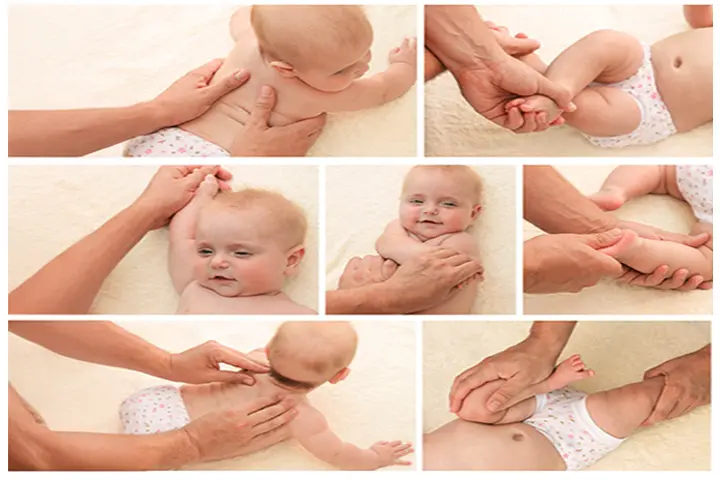
- Hands of a clock: Perform this massage in a circular motion. Make the bottom half of a semi-circle from your left to right with your right hand. Then make a full circle in clockwise motion with your left hand. Always perform this massage in clockwise direction with the left hand following the right.
- Fulling: Place your thumbs flat on your baby’s stomach and move them in a push-pull motion to the sides. Do two strokes above the naval, one stroke on either side moving out from the naval, and two strokes below the naval.
- Paddling: With the sides of your palms, make downward strokes on your baby’s stomach from the rib cage to the pelvis. Each hand should follow the other in a continuous motion.
- Moonwalking: Use your fingertips to walk across your baby’s abdomen from left to right. Do this above the naval area in a push-pull motion without poking.
- I Love You: With your palms, form an ‘I’ on the left side of the baby’s tummy. In the same way, draw an upside-down ‘L’ and ‘U,’ starting from your left to the right.
- Knees up: While holding your baby’s calves and knees gently, push both the legs together towards their tummy and hold it there for around five seconds. Repeat the process three to five times.
Allie, a mother and a blogger, shares how she handled her gassy and fussy baby. She says, “The best thing I’ve found are what I call “fartercise”. Bicycling wasn’t enough. I have to gently stretch his legs up until his feet touch his face. GENTLY I stress. And I start with knees bent and gentle pressure towards his tummy and work my way up. It was the only way I could get him some relief. Now he giggles the whole time I do it but as he’s getting older he is able to take care of most of it himself (i).” - Circular massage: If the baby’s tummy feels soft, massage it in a clockwise circular motion. If they start feeling unsettled with the massage, stop it and move to the next step. Do not massage the naval if the cord has not healed completely (3).
 Quick tip
Quick tip2. Foot massages
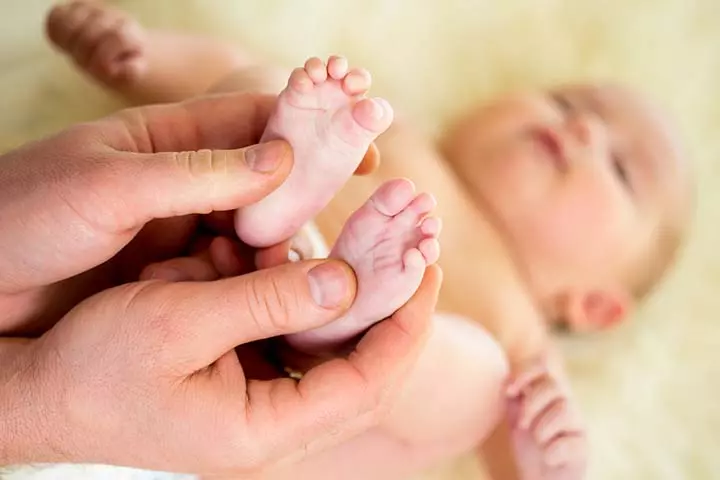
Reflexology is a therapy that effectively improves relaxation and wellbeing (4). Furthermore, certain studies on the effects of reflexology on babies suggest that they positively impact their health and wellbeing (5). Even so, more research is required for homogeneous results.
Nonetheless, after discussing with your healthcare provider or pediatrician, you could massage or rub the correct pressure points in your baby’s feet with moderate pressure to help relieve gas and colic.
3. Massages for colic
Colic is a condition where an otherwise healthy baby cries and fusses for unknown reasons for more than three hours (6).
To date, the exact cause of colic in babies is unknown, but gas formation or food intolerance are sometimes considered as underlying reasons. The massaging techniques used to relieve gas can help provide relief from colic as well.
You can also consider combining massage techniques with other soothing approaches, such as gentle rocking or swaddling, to provide comfort to the baby.
What Are Some Other Tips For Managing Gas In Babies?
Other than massages, the following ways also help to manage gas in babies (7):
- Ensure less air is swallowed by your baby while feeding by slowing down the milk flow. Try different types of bottles, nipples, or anti-colic bottles to ensure this.
- Do not feed the baby if they are overly hungry as it may cause them to swallow more air due to their frantic feeding (11).
- To aid digestion and remove excess air from your baby’s system, burp your baby during and after their feeding session..
- Lay them flat on their back, hold their legs in your hands, and move them in a bicycling motion. Also, try giving them some tummy time to pressurize the excess gas out of the body.
- If certain foods in your diet may be causing gassiness in your breastfed baby, refrain from consuming them. However, consult your doctor before doing so to avoid discontinuing beneficial foods. Alternatively, you can keep a food diary to note any association between your diet and your baby’s digestion.
- If your baby is formula-fed, hold off on powdered formula and use ready-to-feed formula instead.
- Gas drops and probiotics may also help babies with gas pain, but make sure to consult your pediatrician before giving them to a baby.
 Quick tip
Quick tip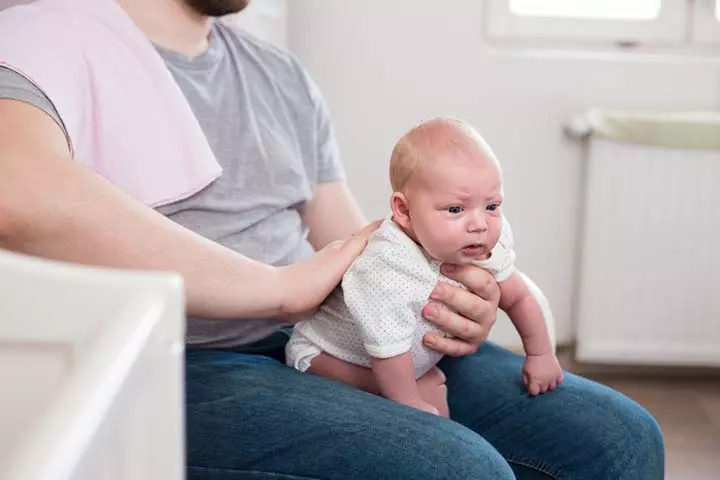
Frequently Asked Questions
1. How do I get my gassy baby to sleep?
Massages and other techniques, such as a gentle pat on the baby’s back or tummy massage, can help to relieve gas discomfort and thus help your baby sleep (1).
2. What are the pressure points to relieve gas in babies?
The following acupressure points for gas relief may help relax babies. You may spend a maximum of 30 seconds massaging any of the following pressure points and may choose a suitable time, such as before bathing, feeding, or dressing the baby for bed.
Stomach 36 (Zu San Li): It can be located by measuring four finger-widths below the kneecap and one towards the outside of the shinbone. Along with gastric pain it may help relieve constipation, vomiting, diarrhea, and improve immune function.
Large Intestine 4 (He Gu): It is located in the webbing between the index finger and the thumb. It may help with abdominal pain and constipation.
Spleen 6 (San Yin Jiao): Located about three finger-widths above the inner ankle bone and may help ease digestive issues (8).
3. Why is gas worse at night for babies?
According to a study, infantile colic caused by factors such as flatulence (gas) that is prevalent during the early night hours may be related to gut immaturity of the baby or breastfeeding (9).
4. Can my baby sleep through gas pains?
Babies can often sleep through gas pains, but if they are restless, they will cry constantly and will be unable to sleep.
5. What are the benefits of baby massage beyond relieving gas?
In addition to relieving gas, baby massages are a good bonding time for the baby and the parent or caregiver. These massages also promote good sleep, relax their muscles, improve mobility and flexibility, help them breathe properly, promote good blood circulation, and boost immunity (10).
It is not uncommon for babies to develop gas at a younger age. Gas can cause a lot of discomfort to babies and, therefore, the parents. Learning massage tricks may come in handy while you are desperately trying to console your crying baby in the middle of the night. Massages may also help calm your colicky baby and help in putting them to sleep with ease. However, you may seek help from your doctor or nurses at the hospital if you have any doubts about your newborn baby’s massage strokes. Be sure always to use a gentle touch when you massage your baby.
Infographic: Reflexology To Relieve Gas Pain In Babies
Each area of the foot is believed to correspond to a different organ in the body. This knowledge is utilized in foot reflexology to comfort babies experiencing abdominal issues. However, this technique should only be used under expert guidance and after consulting a pediatrician. Refer to the infographic to learn about the various reflexology points and when to massage them.
Some thing wrong with infographic shortcode. please verify shortcode syntax
Indulge in the gentle art of baby tummy massage using this video and uncover invaluable tips and techniques to soothe and relax your precious little one.
Personal Experience: Sources
MomJunction articles include first-hand experiences to provide you with better insights through real-life narratives. Here are the sources of personal accounts referenced in this article.
i. Straight From the Mama’s Mouth: Advice on Fussy / Gassy Babies;https://naturalmamanz.blogspot.com/2014/01/straight-from-mamas-mouth-advice-on.html?m=0
References
- Why is my baby so gassy?
https://rmccares.org/2025/09/08/why-is-my-baby-so-gassy/ - Infant massage techniques.
https://ahc.aurorahealthcare.org/fywb/x08128.pdf - Baby Massage
https://www.pregnancybirthbaby.org.au/baby-massage - Introduction to Reflexology.
https://www.aor.org.uk/home/about-us/what-is-reflexology/ - Nimet Karatas and Aysegul Isler Dalgic; (2025); Effects of reflexology on child health: a systematic review.
https://pubmed.ncbi.nlm.nih.gov/32444044/ - Colic.
https://www.hopkinsmedicine.org/health/conditions-and-diseases/colic - Breaking up gas.
https://www.healthychildren.org/English/ages-stages/baby/diapers-clothing/Pages/Breaking-Up-Gas.aspx - Acupressure for Kids.
https://intermountainhealthcare.org/blogs/acupressure-for-kids - Marianne Reinthal et al.; (2011); Gastrointestinal symptoms of infantile colic and their change after light needling of acupuncture: a case series study of 913 infants.
https://www.ncbi.nlm.nih.gov/pmc/articles/PMC3162946/ - The Benefits of Baby Massage.
https://www.healthychildren.org/English/ages-stages/baby/Pages/the-benefits-of-baby-massage.aspx
- Abdominal Pain in Infants: 8 Possible Reasons Your Baby’s Tummy Hurts.
https://www.healthychildren.org/English/health-issues/conditions/abdominal/Pages/Abdominal-Pains-in-Infants.aspx - Gassy Baby? Try These 9 Gas Relief Tips/
https://health.clevelandclinic.org/how-to-relieve-baby-gas
Community Experiences
Join the conversation and become a part of our nurturing community! Share your stories, experiences, and insights to connect with fellow parents.
Read full bio of Dr. Jessica Madden
Read full bio of Sanjana Bhattacharjee
Read full bio of Rohit Garoo
Read full bio of Anindita Ghatak







